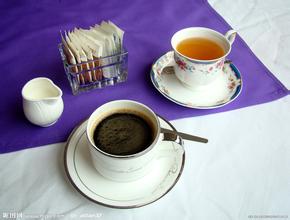A brief introduction to the origin, development, history and culture of boutique coffee beans in Diamond Hill Manor, Costa Rica.

Excellent Costa Rican coffee is called "extra hard beans". This kind of coffee can grow above 1500 meters above sea level. Altitude has always been a problem for coffee growers. The higher the altitude, the better the coffee beans, not only because the higher altitude can increase the acidity of the coffee beans and thus increase the flavor, but also because the night temperature at the higher altitude is lower, which can make the trees grow slowly, thus the flavor of the coffee beans is stronger. In addition, due to the high altitude drop caused by sufficient rainfall, it is very beneficial to the growth of coffee trees.
Costa Rican coffee is full of Arabica beans, washed with water, its style is bright, fragrant, clear as wind chimes swaying in the breeze, mild acidity and sweetness. Because of the sweetness, even if the coffee gets cold, it tastes very good, which is a major feature of Costa Rican coffee. Therefore, it is recommended that you taste Costa Rican coffee with only a small amount of sugar and cream in order to enjoy its girlish flavor.
Country: Costa Rica
Producing area: central valley
Grade: SHB
Treatment method: yellow honey treatment
Altitude: 1300 to 1500m
Varieties: Caturra, Catuai
Flavor description CUPPING NOTES: honey, tropical fruit, maple syrup, melon Honey,Tropical Fruit,Maple Syrup,Melons
The Shepherd Boy Manor is located in the highest altitude producing area in Costa Rica, with a grade of SHB and a delicate full water washing method.
The manor attaches great importance to the concept of environmental treatment, such as collecting Rain Water to process coffee, and the production and use of organic compost using earthworm farming (worm composting) makes the planting process completely free of chemical fertilizers and pesticides. The high-quality coffee produced by this estate is very unique, the biggest feature is that it has a very amazing sweetness, 100% organic coffee! He became famous when he took part in the boutique coffee contest in 2009.
During the harvest season, the sugar content of the fruit is measured by the sugar meter (Brixmeter) often equipped by the wine industry, and the best time and treatment are determined according to the brix sugar content. Only those with more than 20% sweetness will be exposed to the sun. The Brix value of general fruit is 14 for apple, 12 for lemon and 18 for passion fruit, but the coffee cherry of Fenghuang Manor can reach 21-22.
Costa Rica has the most advanced coffee water treatment technology in the world. SHB produced by Shepherd Boy Manor is a typical representative of Costa Rican boutique coffee. The coffee beans produced in the high latitudes of Costa Rica are famous in the world, full-bodied, mild in taste, but extremely sour. The coffee beans here have been carefully processed, which is why there is high-quality coffee. Coffee is an important economic source of Costa Rica. It was introduced in 1808 and has been cultivated for 200 years.
Coffee was introduced into Costa Rica from Cuba in 1729. Today, its coffee industry is one of the well-organized industries in the world, with a yield of 1700 kg per hectare. Costa Rica, with a population of only 3.5 million, has 400 million coffees, and coffee exports account for 25% of the country's total exports. Costa Rica's volcanic soil is very fertile and well drained, especially in the central plateau CentralPlateau, where the soil consists of successive layers of ash and dust. Costa Rica was therefore the first country in Central America to grow coffee and bananas for commercial value. Coffee and bananas are the country's main exports.
Costa Rican coffee has full particles, ideal acidity and unique strong flavor. Costa Rica's coffee industry, originally controlled by the Costa Rican Coffee Industry Company (ICAFE), has been taken over by the official Coffee Committee (Oficinale Cafe). Among the exported coffee, those products that are considered to be of substandard quality are colored with blue vegetable dyes and then transferred back to China for sale. Coffee consumed domestically (dyed blue or undyed) accounts for about 10% of total production, and local per capita coffee consumption is twice that of Italy or the United States.
This coffee producing place, coffee of all grades and types accounts for 1/3 of the global consumption and occupies a share in the global coffee market.
Although Costa Rica faces several times more natural disasters than other regions, it has enough acreage to make up for it.
There are many kinds of coffee here, but its industrial policy is large and cheap, so there is not much premium coffee, but it is a good choice for mixing other coffees.
One of the most famous is Mountain Costa Rica Coffee, which tastes mellow and neutral. It can be boiled directly or mixed with other kinds of coffee beans into mixed coffee. It is also a good choice.
Other kinds of Brazilian coffee, such as Rio and Parana, can be produced in large quantities because they do not require too much care. Although the taste is rough, it is a kind of high-quality and inexpensive coffee, which has its own standards because it is distributed all over the country and varies in quality (NO.2~NO.8 according to the number of sundries, NO.13~NO.19 according to the size of beans, and six grades according to taste). Almost all Arabica varieties are of good quality and stable in price. The most famous one is Costa Rica, which has been a necessity of blended coffee and is familiar to the public since ancient times.
Important Notice :
前街咖啡 FrontStreet Coffee has moved to new addredd:
FrontStreet Coffee Address: 315,Donghua East Road,GuangZhou
Tel:020 38364473
- Prev

Brief introduction of planting Market Price of Fine Coffee Bean varieties with ideal acidity in Sijas Manor of Costa Rica
Tres Rios, English three rivers, also known as Sanshui River, has the fertile soil created by the Irazu volcano, located north of the capital San Jose, about 12km away. Costa Rican coffee has full particles, ideal acidity and unique strong flavor. The coffee industry in Costa Rica was originally owned by the Costa Rican Coffee Industry Company (InstitutodelCafdeCostaRica, I.
- Next

A brief introduction to the market price of boutique coffee beans in Diamond Hill Manor, Costa Rica.
This coffee producer, with all grades and types of coffee, accounts for 1/3 of the world's coffee consumption and occupies a place in the global coffee market, although Costa Rica faces several times more natural disasters than other regions. but it has enough acreage to make up for it. There are many kinds of coffee here, but its industrial policy is large and cheap, so it is excellent.
Related
- Does Rose Summer choose Blue, Green or Red? Detailed explanation of Rose Summer Coffee plots and Classification in Panamanian Jade Manor
- What is the difference between the origin, producing area, processing plant, cooperative and manor of coffee beans?
- How fine does the espresso powder fit? how to grind the espresso?
- Sca coffee roasting degree color card coffee roasting degree 8 roasting color values what do you mean?
- The practice of lattes: how to make lattes at home
- Introduction to Indonesian Fine Coffee beans-- Java Coffee producing area of Indonesian Arabica Coffee
- How much will the flavor of light and medium roasted rose summer be expressed? What baking level is rose summer suitable for?
- Introduction to the characteristics of washing, sun-drying or wet-planing coffee commonly used in Mantenin, Indonesia
- Price characteristics of Arabica Coffee Bean Starbucks introduction to Manning Coffee Bean Taste producing area Variety Manor
- What is the authentic Yega flavor? What are the flavor characteristics of the really excellent Yejasuffi coffee beans?

